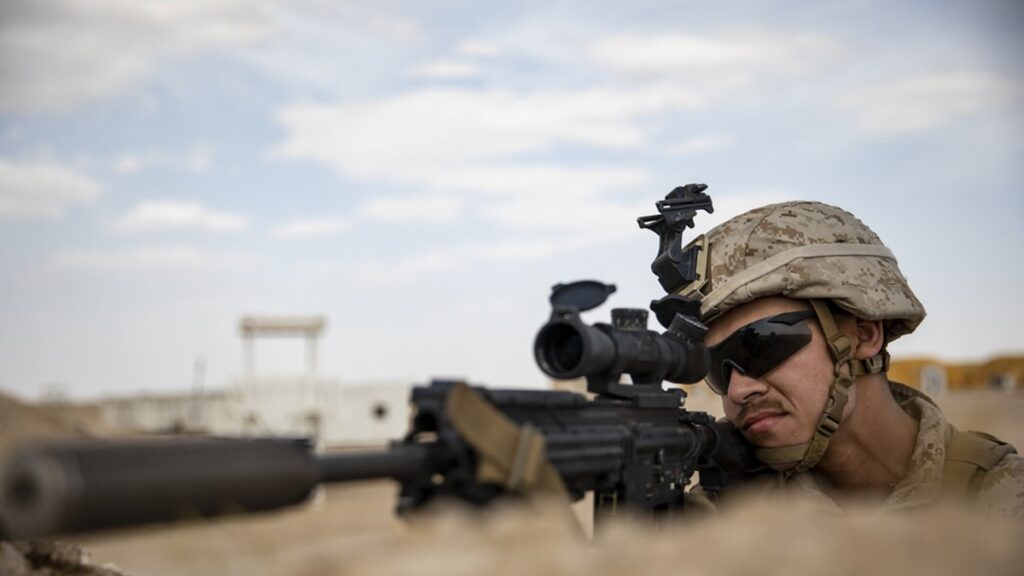
Back in 2012, I penned a piece about the potential accuracy of AR-15s. Although most points are still valid, one change is a shift to longer range shooting. This wave of interest is reflected in manufacturers moving to new rangefinders and optics, including some that interface to provide accurate ballistic solutions.
This post is sponsored in part by Ranier Arms and Palmetto State Armory.
Much interest also centers on new low-drag performers like the 6.5 Creedmore, however, the very low drag (VLD) craze also extends to smaller projectiles. Streamlined heavy-for-caliber .223 Remington loads can better buck the wind for precise placement of projectiles at longer distances. But, none of this really matters without a well-built rifle. Other developments since my old article include piston-driven ARs and suppressors.
These, and additional factors, can produce both positive and negative effects. To help set the stage, here’s a trip through the 2012 Way-back Machine.
AR-15 Comments from 2012
I’ll always have an accurate bolt-action .223, but the capabilities of a well-built AR-15 have changed my thinking – as well as the contents of my gun safe.
From Bolt-Action to Semi-Automatic
At one point I maintained a 26″ heavy-barreled Remington VSSF Model 700, as well as lighter “walking varminter” 20″ Model Seven. Both shot well and the M-700 was a true .5 MOA performer. However, experience with several varmint-type AR-15s confirmed reports of stellar accuracy – a surprising twist considering the supposed inferior accuracy of semi-automatics.
Years ago I owned a Bushmaster V-Match AR-15. It shot below .75 MOA with good .223 ammo. Later, I procured a couple similar Bushmaster 24″ Varminters for over-watch use by my agency. Based on their performance, I picked up a third Varminter for myself. All were flat-tops with free-floated forends, decent triggers, fluted 1×9 barrels, and non-threaded muzzles. They consistently shot right around .65 MOA with .223 Hornady 55-grain TAP.
Bolt-Actions on the Prairie
Soon after, a fellow firearms instructor and I drove 2,100 miles for a prairie dog shoot. We brought lots of .223 ammo and several bolt-actions, including our heavy-barrel M-700s. We also got in a bunch of shooting during a very entertaining three days!
However, when engaging hamster-sized targets at 300+ yards, wind becomes a significant factor. A miss will kick up dust, which helps determine the correct hold for follow-up shots, but relocating these small targets can be tough after running a bolt. It takes time, resulting in lost opportunities. Having already tested precision AR-15 rifles, it didn’t take us long to realize the advantages offered by fast follow-up shots…
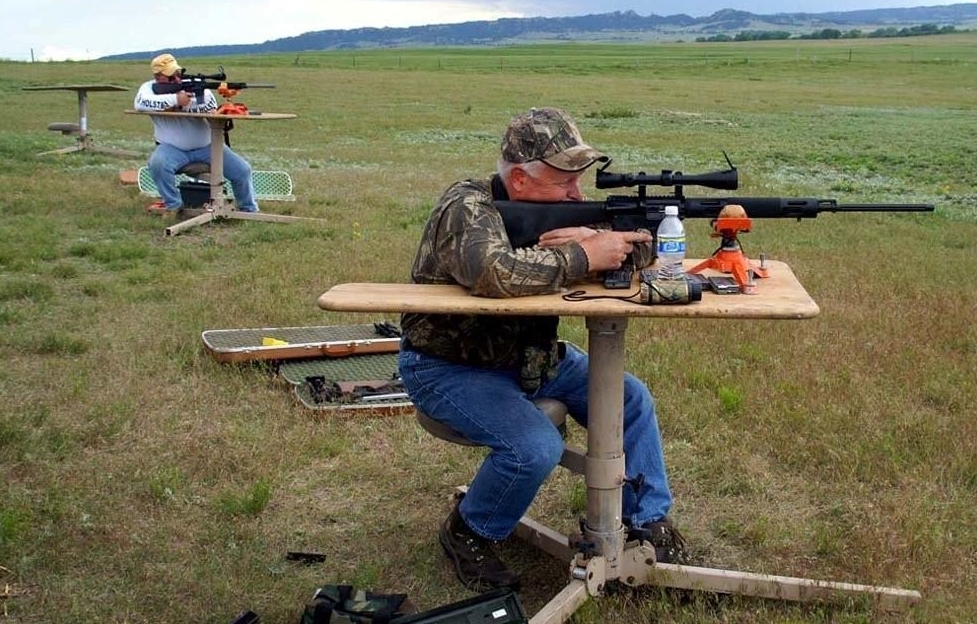
Semi-Automatic AR-15s on the Prairie
A few years later we were back for a return engagement. This time I brought my Bushmaster Varminter, and my buddy had a new 24″ Rock River. We each had an ammo can full of 20-round magazines, legal there for anti-gopher operations.
Our plan was to load no more than 5 rounds per magazine in order to maintain cool barrels. This lasted maybe 5 minutes. Brass was flying and sod poodles were break-dancing. The combination of accurate rifles, Leupold Varmint Hunter reticles, and quick follow-up shots noticeably multiplied the carnage quotient.
We stopped for a while on day #2 to uncase our bolt-guns. After less than a box of ammo we were back on the AR-15s, hot barrels and all.
Heavier Barrel and Faster Twist
Later, after watching my sidekick shoot some incredible groups with his heavy-barreled Rock River AR, I sprung for a 24″ upper. It was special ordered with a slower 1×12 twist stainless barrel, cut for a Wylde chamber. This hybrid SAAMI/NATO version fixes much of the slop associated with a looser mil-spec chamber. The rifling, although less popular, better stabilized light 40-grain .223 bullets that corresponded with my ballistic reticle out to 500 yards.
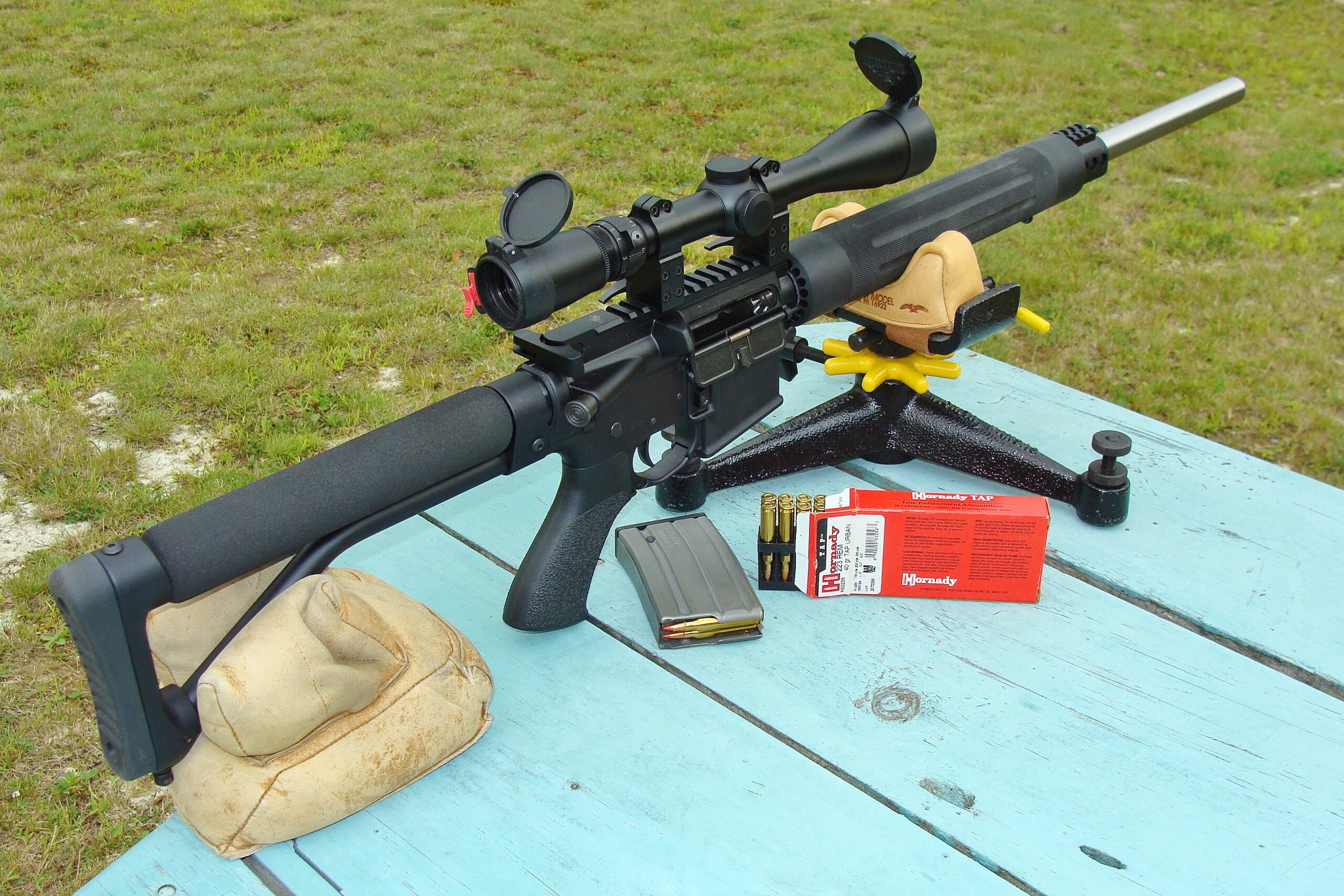
Like my partner, I wasn’t disappointed. The stunning ½ MOA (or better) accuracy of both Rock Rivers easily rivaled our pet HB M-700s.
This begged a question: Why even bother with our bolt-action varmint rigs?
That’s a personal, and sometimes, legality-based decision. Eventually, I condensed my .223 bolt gun inventory to a single in-between, a 20″ M-700 Compact Tactical rifled to 1:9.
Since an AR-15 is the ultimate transformer, it’s easy to switch upper receivers. During winter months I push out two pins and replace the varmint assembly with an 18″ coyote-killing upper. Rifled to 1:8, it also displays excellent accuracy (the familiar Rock River two-stage match trigger probably doesn’t hurt).
The shorter package doubles as a do-all rifle and, between both iterations, I can maximize year-round shooting opportunities. That’s the beauty of this accurate and highly adaptive system.
2020 AR-15 Update
A recent question was asked of me: If I could build the most accurate AR-15, what route I choose?
Actually, I might not “build” one at all. Consider this…
The above referenced 24” Rock River has been dead-nuts reliable and it’s accuracy is superb. Not bad considering the upper unit was really an afterthought dropped onto an existing lower, which mostly by coincidence, was also a Rock River. This happy union began with a stripped lower and was completed using RR’s two-stage match trigger. Since then, the lower has gone through several stock iterations. So at this point, the significant remaining constant is its trigger – but the upper has remained unchanged since the honeymoon began. I think there’s a lesson here.
What is an AR-15’s Expected Level of Accuracy?
Based on 5-shot groups, most mid-level ARs will average 2 MOA or better (roughly 2” at 100 yards). With good ammo, many higher-end defensively oriented versions will shrink that by nearly 50%, putting 5 shots into around 1 ¼ MOA.
Some purpose-built so-called “match-grade” ARs can squeak down to half of that, my above-mentioned 24” Varminter being an example. But another tier of super-accurate AR-15s exists for those willing to spring for the premium components. Careful assembly can yield ½ MOA or better as an expectation.
Top Components Influencing AR-15 Accuracy
The factors influencing accuracy are the rifle’s barrel, chamber, rifling rate, fitting, trigger, optic, ammunition, and a few other factors. Personal skill, of course, goes without saying.
Some AR-15s will reach superior levels of accuracy, and if yours does – congratulations! I lucked out and got one, too. But the odds of top-notch accuracy vastly improves using proven methods and parts. Among them is the heart of the rifle – its barrel.
Barrel
Off-the-record conversations with industry insiders can be revealing. When it comes to pure accuracy the subject soon gravitates to barrels. A trusted AR manufacturing contact filled me in on some crucial details. As many shooters know, G.I. bores (which are usefully accurate), have long been chrome-plated.
However, for match-grade consistency, this firm uses stainless steel (which also extends barrel life). Theirs are premium, air-gauged, and cryogenically stress-relieved. Details that don’t come cheap!
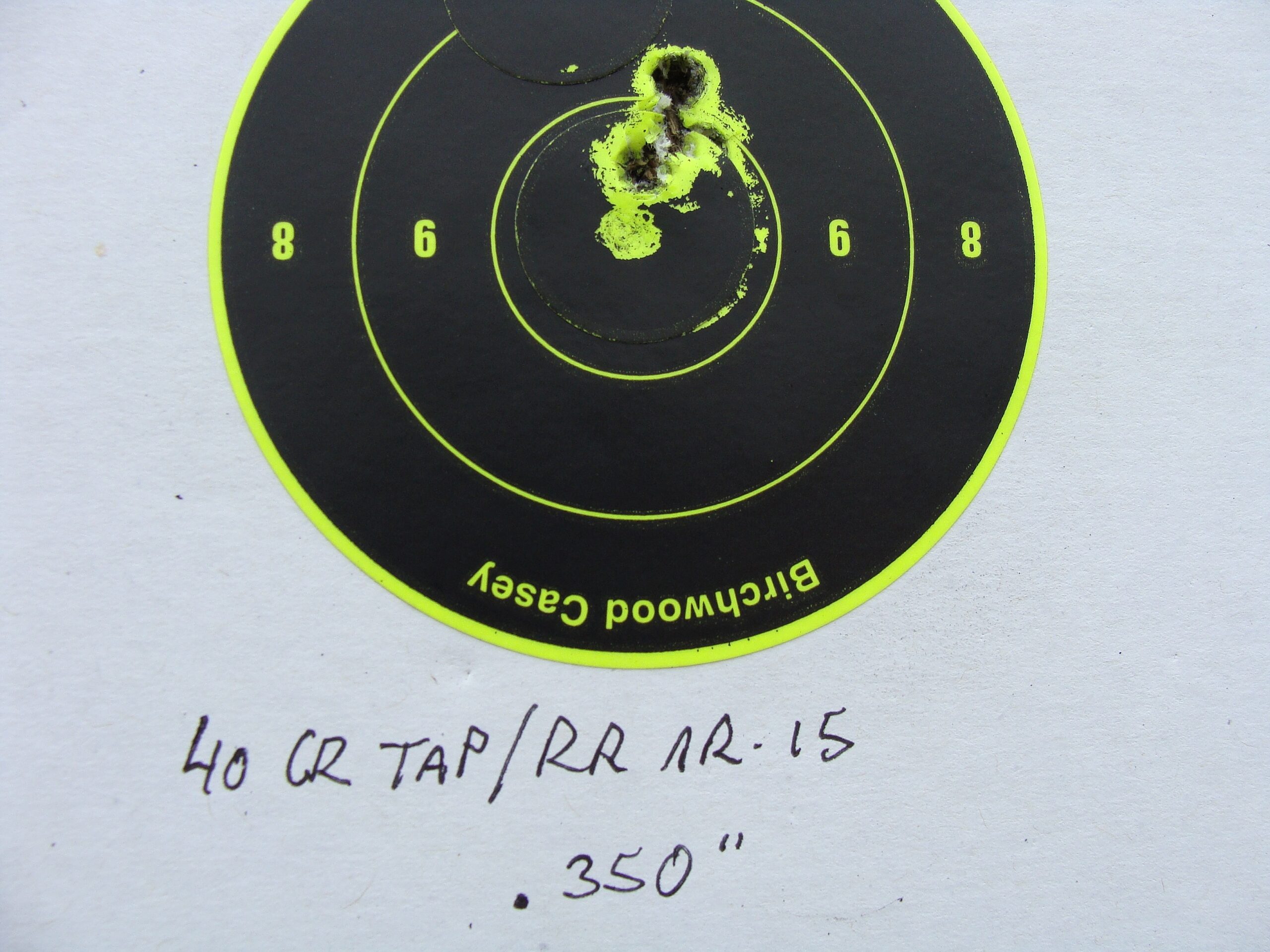
To avoid any minor negative effects from threading, the crowning touch (pun intended) is a bare muzzle, carefully dished with an 11-degree target crown. Safe use of all ammunition is assured through a hybrid Wylde Chamber, which provides enough clearance for use of 5.56 NATO loads while effectively centering .223 rounds (as required for best accuracy). Function-wise, in a semi-auto, the Wylde is also a more reliable bet than a true match chamber.
.223 and 5.56 Chambers
I once discussed the mediocre accuracy of a major manufacturer’s varmint-grade bolt-action .223. The company contact recommended going with another caliber to achieve optimum results. Turned out, as a CYA move, their .223 Remington was cut with a looser 5.56 NATO chamber for safer use of either round. That said, I own one stamped 5.56, which shoots ½ MOA (or better) with the right load. It’s worth noting though that some AR chambers don’t reflect their actual markings.
Rifling Rates
There might be some voodoo involved with twists. As a rule, heavier or longer-for-caliber projectiles require quicker rates. The 5.56/.223 family has seen considerable change as the result of increasingly heavy bullets. The early 1:14s have morphed to more common 1:7s, with many falling in between.
The new ultra-heavy VLD bullets are candidates for the latter. Again, I spec’d 1:12 for the lightest varmint weights (I’d expect bullet-tumbling with the former). If unsure, 1:9 is good compromise. But the proof is in the shooting. My son owned a 1:7 that cut phenomenal groups with good 55-grain .223 ammunition (stamped 5.56 NATO). I just saw a credible accuracy test involving 70-grain .223 VLD match-loads fired from a 1:9 bolt-gun. Accuracy was below .33 MOA! Go figure.
Fitting
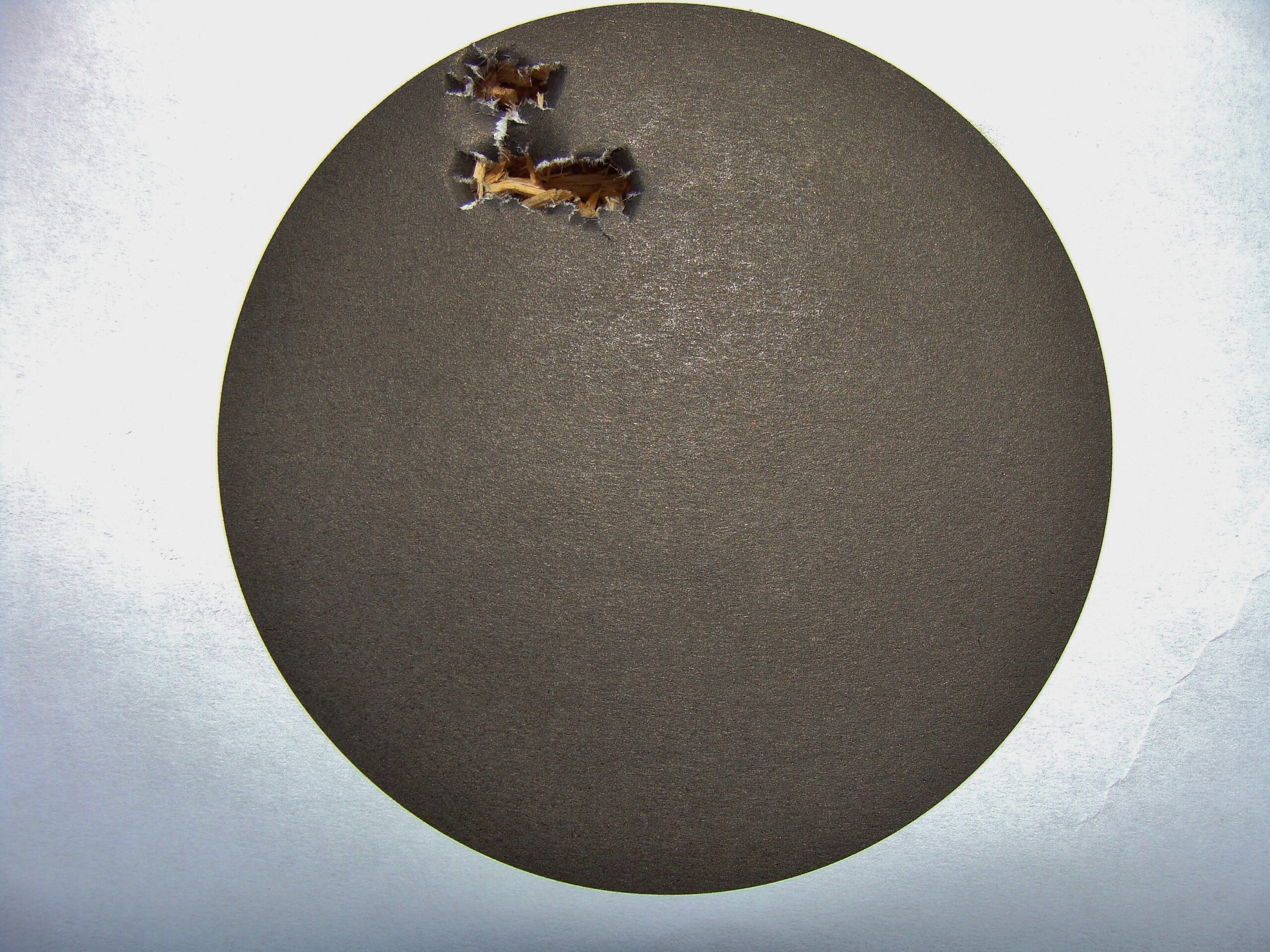
Slop between the upper and lower receiver halves is disconcerting, and could affect accuracy. But any slop in the upper receiver/barrel junction will certainly be detrimental to accuracy.
Typically, the barrel’s smooth shank slips into the aluminum receiver until arrested by a shoulder, at which point a threaded collar draws both parts together. Some builders use thread-sealant to eliminate minor slop and/or maintain maximum tension. A better trick involves use of heat to temporarily expand the receiver’s opening for a super-tight shrink-fit.
Close tolerances are necessary to make this work so it’s a signature of high-end builders. Precise bolt engagement also helps.
Triggers
Maybe I lucked out with my $100 Rock River install, but it certainly does the job for me. Most others will cost double that, no doubt for good reasons.
One thing is certain: You won’t achieve consistent match-grade accuracy with a standard military trigger.
Today’s drop-in modular triggers are worth the extra cost and are much safer than kitchen-table trigger jobs.
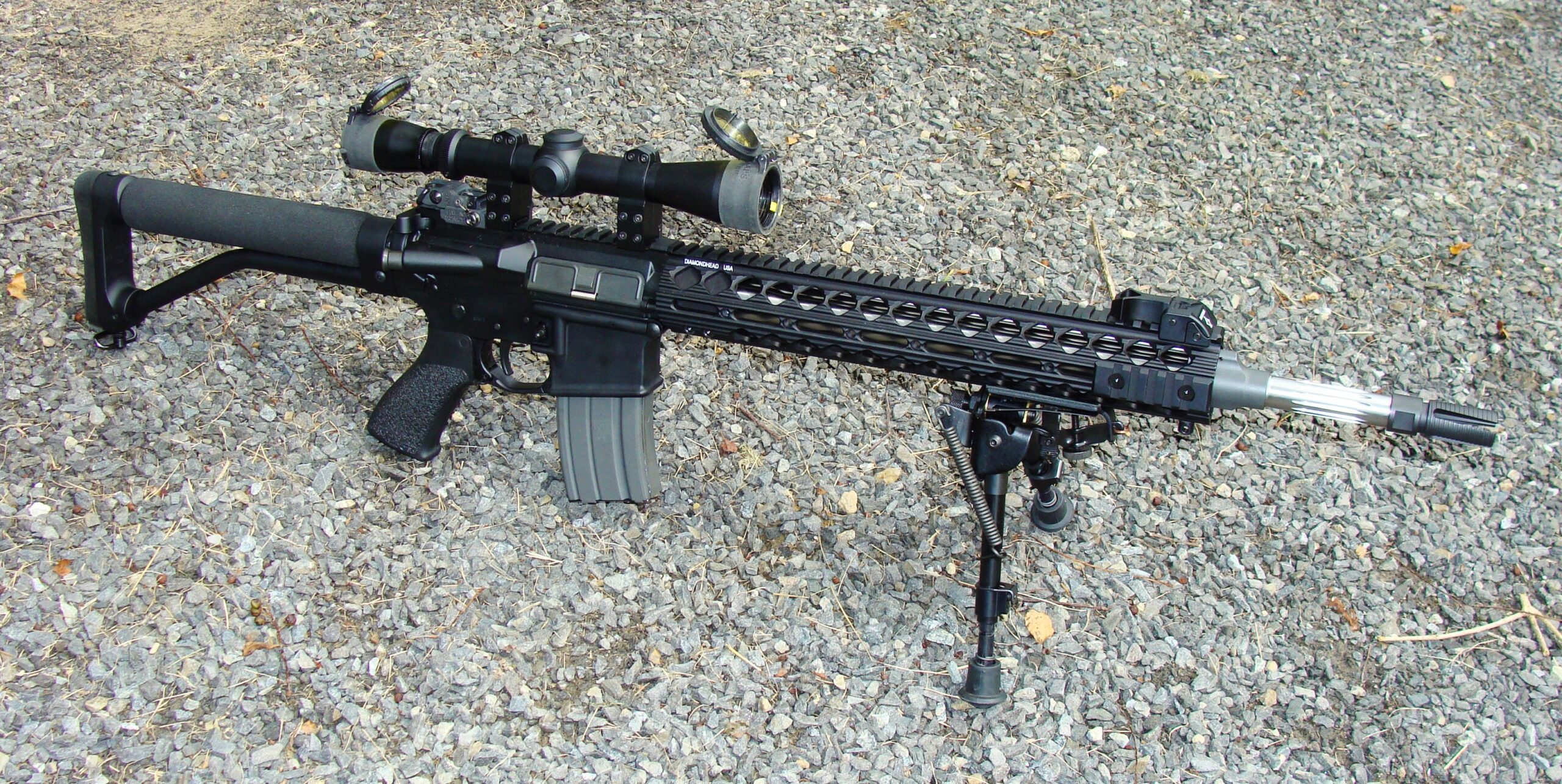
Optics
Obviously, good optics are essential. You can’t wring out a rifle’s full potential without a decent scope. For standard bench rest testing at 100 yards, I would want an optic capable of at least 9X magnification. It will also require a solid mounting system that won’t have contact with forend rails.
Ammunition
This whole project is moot without quality fodder, compatible with the barrel’s rifling. The Plain Jane full metal jackets used for plinking or training are fine for defensive-type practice, but they will most likely only produce 1.5 accuracy. A tack-driving AR won’t come cheaply, so the extra expense for a $30 box of ammo just makes sense.
Other Factors Influencing Accuracy
Other factors influencing the rifle’s accuracy include whether it is a piston-drive AR, whether it has a suppressor, its canting, and barrel care.
Piston-Driven AR-15s
Piston-driven ARs caught on awhile back. My agency’s designated marksmen used piston-driven .308 AR-10 derivatives which shot quite well, but our snipers still use .308 bolt-actions.
Both platforms are amenable to suppressors but, in my experience, top-flight .223/AR-15 accuracy is the domain of the original direct-impingement system. Makes sense considering there aren’t any extra moving parts to introduce harmonics.
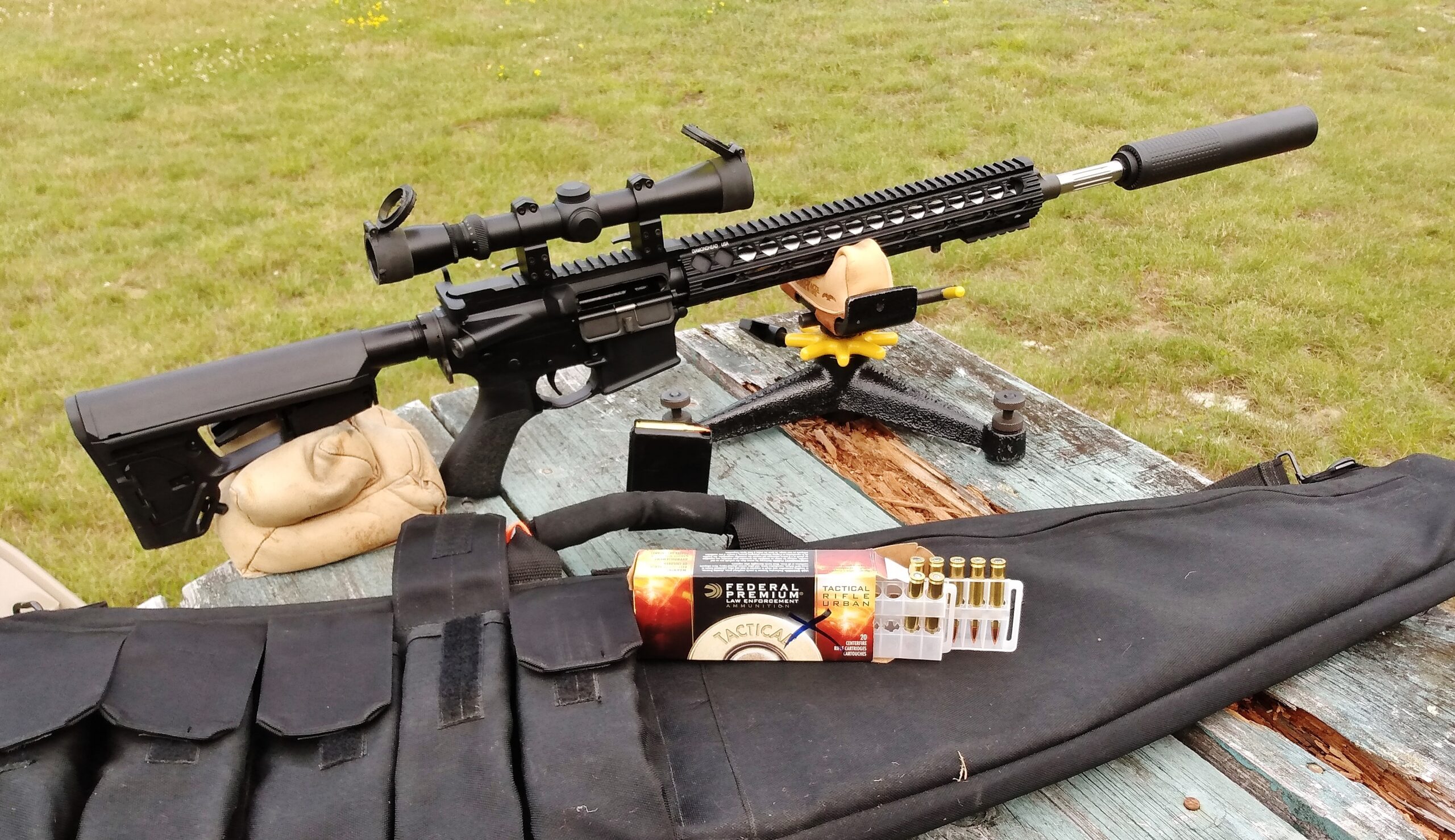
Suppressors
Suppressors are hugely popular today, so threaded muzzles are a new norm. Although the latter can effect accuracy, when done right, threading is less of a concern. My 18” upper regularly cuts ½ MOA groups with its Phantom QD muzzle-device attached. A suppressor can sometimes improve accuracy, although point-of-impact could shift.
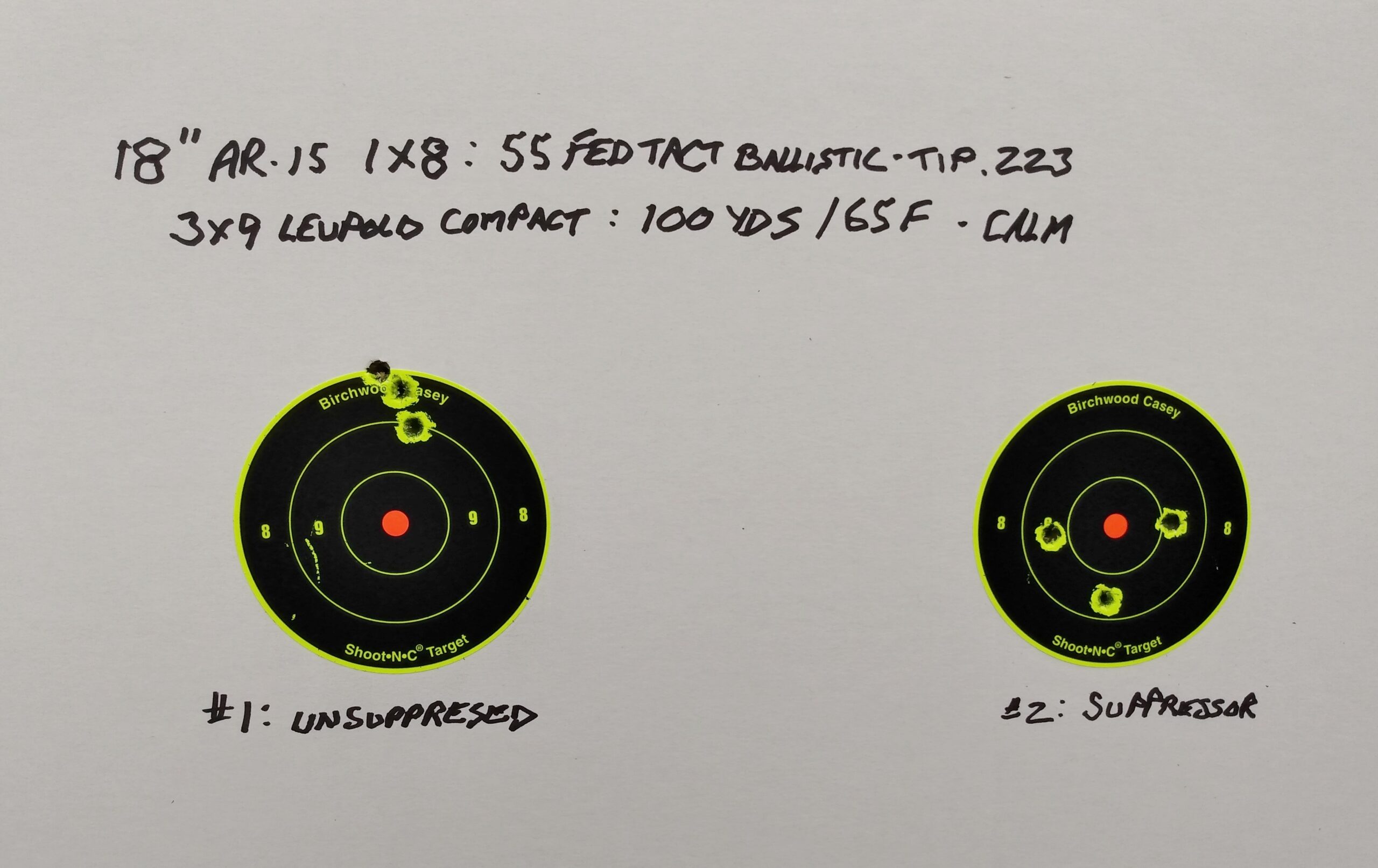
After spinning mine on, the POI change is minimal but group size doubles. Either way, muzzle flash is almost totally eliminated – a huge benefit when engaging coyotes after dark.
Also read Suppressor Alternatives by Steve Markwith
Canting
Canting can introduce windage errors falsely attributable to accuracy, and round free-float forends don’t help. This problem can appear during careful testing off sandbag rests. I deal with it by paying extra attention to level crosshairs, but a bubble-level would be better.
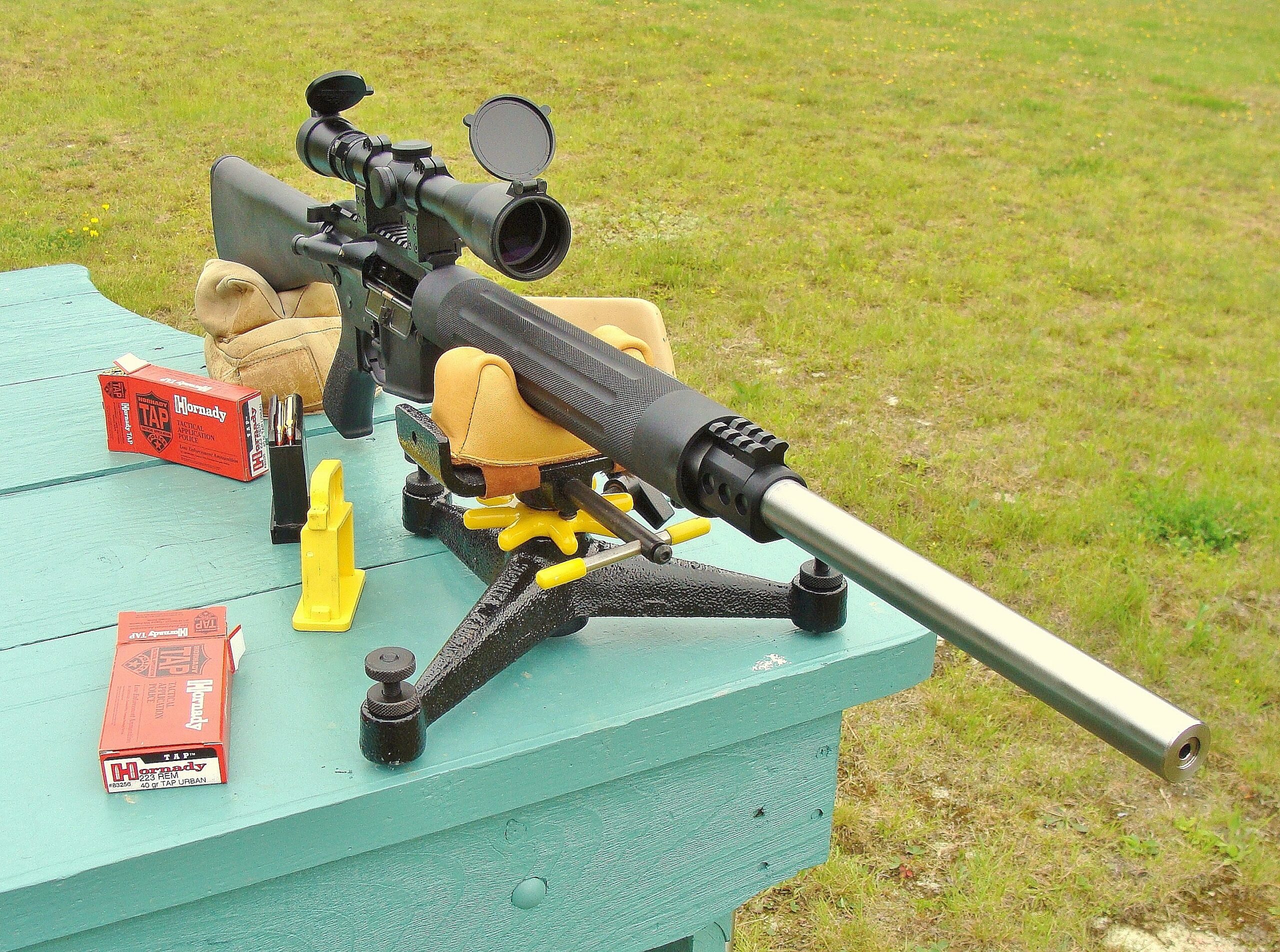
Barrel Care
Lastly, plenty of great barrels have been trashed through sloppy cleaning methods. Two essentials are a good one-piece rod and an AR bore guide. If the quest is maximum accuracy, I’d avoid a used rifle unless its history is trusted.
Break a new barrel in with care. Blasting through large quantities of any ammo-type within a short period of time is bad, since barrel erosion is greatly accelerated through rapid heating. Opinions vary on barrel break-in procedures, so if possible, follow a manufacturer’s protocol.
I’m not a true fanatic, but I do baby the most accurate barrels. The first couple shooting sessions will never exceed 8 rounds between cleanings and most from that point onward will be limited to around 18. Of course, sometimes this principle is violated – like during a prairie dog lead-fest. If so, thorough cleaning becomes at least a daily chore. Worst case, if accuracy does eventually fade, an AR’s upper is easy to re-barrel or even replace.
Should You Buy or Build a Highly Accurate AR-15?
I’ve seen some AR “builds” that shoot surprisingly well. There are some true AR gurus up to this task, but it is not easy and requires a certain skill set. For many (including me), the safest return for the investment is buying an assembled rifle from a reputable manufacturer.
As for its configuration, for maximum AR accuracy, a heavy 20-or 24-inch barrel (similar to my trusty Rock River) makes the short-list. The extra length isn’t essential for peak accuracy, but it does maximize velocity. The downside: it’ll handle like a truck axle, especially with an appropriate scope!
For this reason, mine mostly serves as a spare upper which logs a lot of time in the safe. But when the need arises, by popping the lower’s two receiver pins, it can easily transform the handier carbine into a true varmint rig.
However, for assurance of maximum accuracy, it’s probably best to start with a complete rifle (again, built using high-quality, carefully assembled components). No doubt there are numerous good sources, but I’ll never nail them all.
Playing it safer, the following companies are those I have personal experience with. All offer completed rifles, but separate uppers are also available in various configurations.
Rock River Arms
Rock River is an affordable production-option, and they offer a ¾ MOA guarantee with their Wylde chamber models. It’s probably safe to assume most (like those I’ve used) will do better. You can pick and choose some key features, including twist rates, etc. A switch-top upper is also possible via several calibers.
Windham Weaponry
The Bushmasters mentioned above are from the pre-Remington era. I don’t have any experience with the relocated Big Green versions, but some of the original staff are now building affordable Windham Weaponry rifles at the former site. Having procured dozens of ‘em for my agency, I know they work well, which comes as no surprise having witnessed their stringent QC standards. Their present 1:8 Varmint Model uses a Compass Lake Engineering chamber, a variation of the Wylde. Cost is comparable to the Rock River.
How Much Does it Cost to Buy a Highly Accurate AR-15?
Price is secondary to performance when you are trying to achieve maximum accuracy. Rifle costs could easily exceed $2,000.
Les Baer was on the short-list with their ½ MOA accuracy guarantee, proof an accurate AR is possible. Supposedly, due to the saturated market, this semi-custom builder has dropped their AR line to focus on 1911s. But there are others…
JP Enterprises is now my first stop. Everything they build is extremely well-designed and the eye-candy aspect is dazzling by itself. They have also turned the nuances of receiver/barrel fitting into a real science. The downside? Great risk of poverty.
Wilson Combat is another well-known custom/semi-custom builder with a legacy of top-notch 1911 pistols. Today, they also list a line of intriguing ARs in different calibers. The .223 Wylde Super Sniper is but one example. A spare upper in a larger AR-15 compatible caliber like .300 Ham’r or .350 Legend, etc. will work for deer or hogs.
A more economical approach can be to build off an existing rifle. A high quality AR-15 rifle will start at around $1,200. To achieve higher levels of accuracy, however, the price would increase through add-on features.
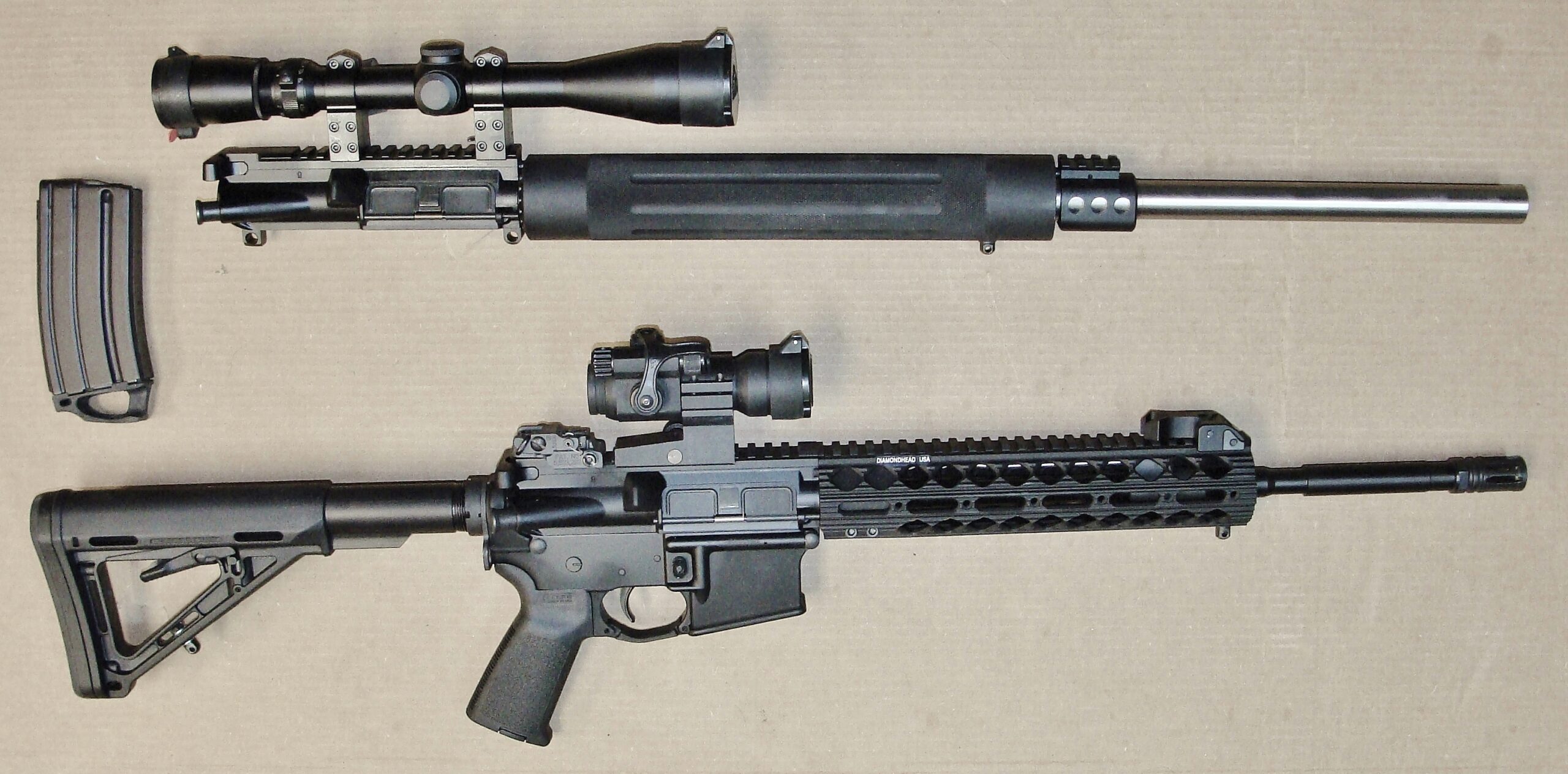
Accuracy and AR-15s – Summary
Today, it’s fair to say an AR-15 can rival the accuracy of many top-flite bolt-actions. In milder calibers, like the .223, you can ride the gun during recoil, eliminating the need for a spotter. If necessary, a fast following shot will also be instantly available.
Jurisdictional hurdles could rule out an AR-15 for some, but the main obstacle for most will be cost. And, actually, some production ARs are even narrowing that gap.
What about you? What rifle AR improvements have you made to improve accuracy?